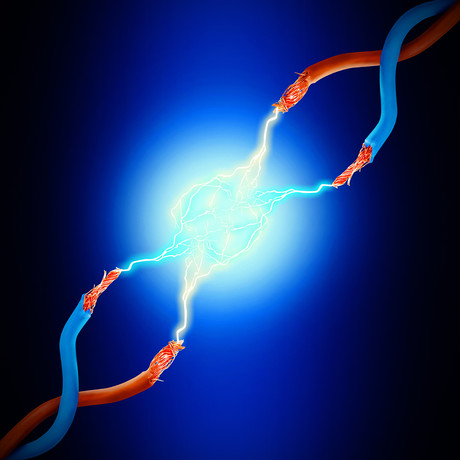Single- versus three-pole circuit breakers

It’s not a new concept to use a three-pole circuit breaker for protecting three single-phase loads in order to save space and costs.
But what if the loads to be protected — eg, electric motors — have different technical data and require different kinds of protection? In many devices — for example, machines and plants with several loads — it generally makes sense to protect each load separately and individually. Individual protection, unlike group protection, ensures that each electrical load is optimally protected against possible damages caused by overheating. In addition, it widely excludes nuisance tripping. If a single-pole protection is sufficient, single-pole circuit breakers for equipment protection are reliably equal to this task. Example: If three motors have to be protected within one machine, three single-pole circuit breakers will be required for this purpose.
Another alternative is to use three single-pole circuit breakers instead of one three-pole circuit breaker. This would reduce mounting time and space requirements significantly. Moreover, in the event of a load failure, all three loads will always be disconnected from the supply voltage, including the non-faulty loads. This will ensure a complete machine shutdown.
A three-pole circuit breaker can, however, only be used under the pre-condition that the current ratings of the circuit breakers are matched with the performance data of the loads. If the three loads to be protected are three identical electric motors, any standard three-pole circuit breaker could be used. But what if motors used require different circuit breaker ratings? Three-pole standard circuit breakers must be discarded because their three-pole chambers have identical ratings.
E-T-A’s thermal circuit breaker/switch combinations, eg, the three-pole rocker-actuated 3130 or the 3140 multipole model with push-button operation offer a potential solution. Their pole chambers can be fitted with different bimetal trip elements. This allows customers to select the requested current ratings from the entire current rating range of the circuit breaker. The 3130 three-pole circuit breaker with rocker actuation can have a 5 A bimetal in the first pole chamber, a 10 A bimetal in the second chamber and a 16 A bimetal in the third chamber. E-T-A’s 3130 and 3140 circuit breaker types carry international approvals, including VDE, UL, CSA and CCC, even when fitted with different bimetal trip elements, and are therefore suitable for global use.
Multipole circuit breakers can make a big contribution when being used for the protection of single-phase loads or DC loads. If a multipole circuit breaker is to protect different loads, the current ratings of the various pole chambers should be adjusted to the trip limits of the loads. E-T-A’s circuit breaker/switch combinations meet these requirements. The poles can individually be fitted with different bimetals for different trip characteristics.
Can cathodic protection design support ESG outcomes?
Omniflex's David Celine explains how CP system design can support environmental, social and...
Designing a robust cable for aquaculture
To ensure the health of farmed marine animals, the components of an aquaculture system must work...
Protecting your enclosures from environmental hazards
Ingress Protection (IP) ratings provide valuable information about the protection level of an...



